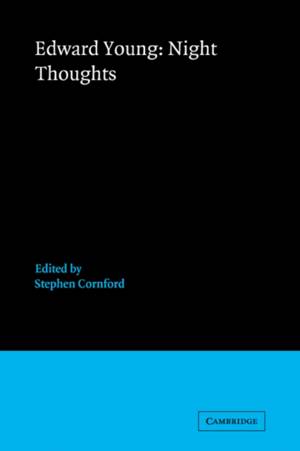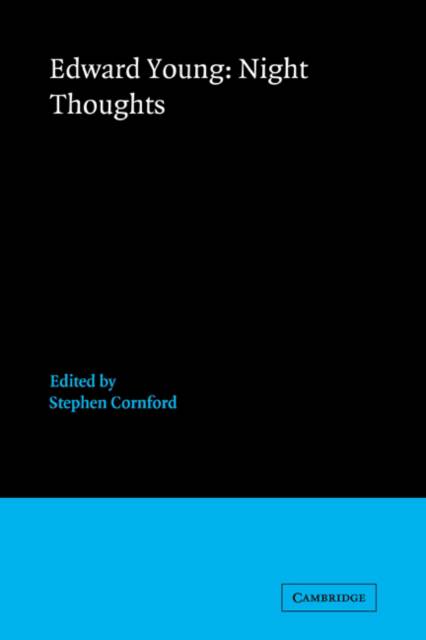
- Afhalen na 1 uur in een winkel met voorraad
- Gratis thuislevering in België vanaf € 30
- Ruim aanbod met 7 miljoen producten
- Afhalen na 1 uur in een winkel met voorraad
- Gratis thuislevering in België vanaf € 30
- Ruim aanbod met 7 miljoen producten
Omschrijving
During the century after its publication in 1742, 'Night Thoughts' was one of the most popular, widely read and influential poems in the English language. However, there have been no editions of the poem since the middle of the nineteenth century. This edition contains a critical introduction setting the poem in the context of the eighteenth-century sublime. There is a commentary which explains historical and linguistic obscurities, and a history of the poem's publication. The text is based on the first editions of the separate 'Nights', and the old spelling has been retained. The editions are collated here, and all substantive variants recorded. Dr Cornford's critical introduction discusses the conception of the poet's role; Young's attitude to the 'imagination' in the context of contemporary epistemology; eighteenth-century attitudes to death and immortality as expressed in sermons and devotional literature; and the critical reception of the poem in Britain and Europe. This discussion seeks to explain why a poem of Christian consolation, orthodox and ancient in its theology, became a seminal work in a secular cult of sepulchral melancholoy.
Specificaties
Betrokkenen
- Auteur(s):
- Uitgeverij:
Inhoud
- Aantal bladzijden:
- 384
- Taal:
- Engels
Eigenschappen
- Productcode (EAN):
- 9780521069670
- Verschijningsdatum:
- 31/07/2008
- Uitvoering:
- Paperback
- Formaat:
- Trade paperback (VS)
- Afmetingen:
- 152 mm x 229 mm
- Gewicht:
- 562 g

Alleen bij Standaard Boekhandel
+ 212 punten op je klantenkaart van Standaard Boekhandel
Beoordelingen
We publiceren alleen reviews die voldoen aan de voorwaarden voor reviews. Bekijk onze voorwaarden voor reviews.










